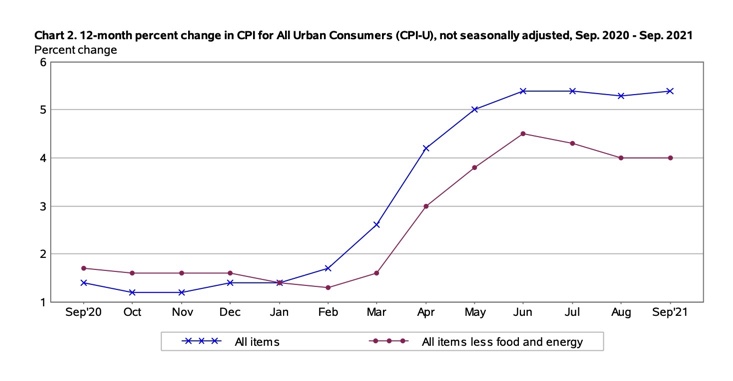How much is inflation costing you? Quite a lot
Inflation is all the rage right now — and for good reason. For the past couple of months, Americans have been paying more for everyday goods and services, and according to new numbers, this trend will likely continue in the foreseeable future.
According to the latest data from the Bureau of Labor Statistics (BLS), in the one-year period leading up to September, the general level of prices has risen by 5.4 percent. This is an all-time high of 13 years.

Of course, some people have come forward claiming that such persistent inflation is good for the country. Among the reasons given is that high inflation rates would make debts (like a mortgage) easier to service and will also raise interest rates, which will ensure that the federal government has a lot of room to act during the next crisis.
This, however, ignores how much inflation is costing millions of Americans. And the truth is that inflation is costing you and me quite a lot. From high and rising prices to wage cuts, there is nothing beneficial about the current trend for the average American.
Wage cuts and price hikes
Americans are paying more for everyday items, not just food and energy, but also things like furniture, housing, and cars. According to an analysis by Moody Analytics, families with incomes of about $70,000 are paying an additional $175 per month for food, housing and fuel. Annually, this adds up to a little over $2000 and is equivalent to a three percent extra tax on income.
Not to mention that wage raises have not kept up with inflation giving workers a pay cut. Recent data from BLS shows that while real earnings (that is earnings indexed for inflation) rose between August and September of this year, they have declined in the year between September 2020 and 2021. While wages have risen by 4.6 percent, inflation rates have risen by 5.4 percent, leading to a 0.8 percent decline in real wages.
The Wall Street Journal, in fact, estimates that real wages for Americans have declined by 1.9 percent since late January.
Costs will pile up
It is true, rising inflation rates are good for some things like debts and assets. In fact, rising rates of inflation when the economy is not producing at full capacity –– meaning there are unused resources or labor available –– can increase demand, which in turn can stimulate increased production.
This is, however, not the case with the current trend. Supply chain backlogs and other disruptions means that our production capacity cannot be extended by extra spending. And despite workers commanding higher wages in new jobs, those higher wages are not keeping up with high inflation rates and are buying less and less.
With current currently projections showing current trends might persist well into the next year, costs of inflation are bound to pile up on American workers.